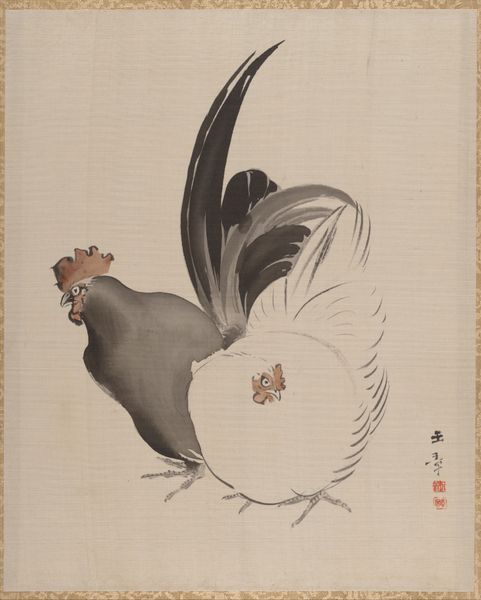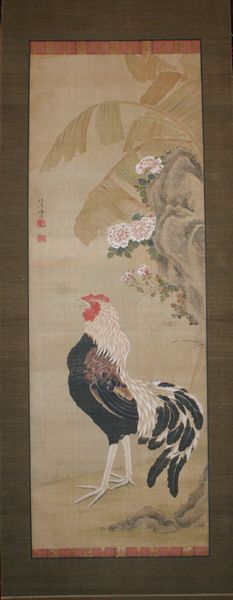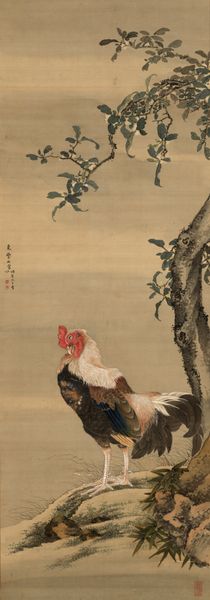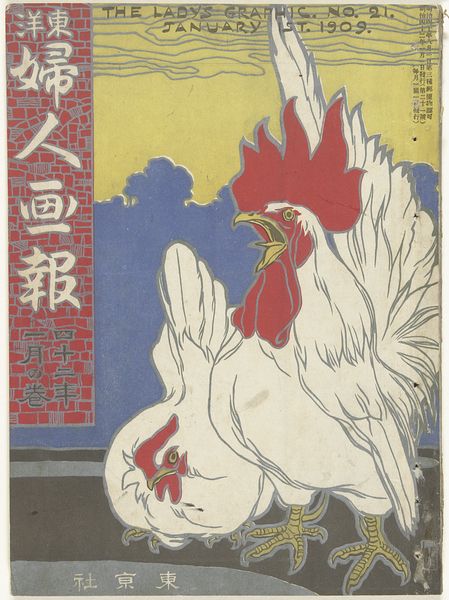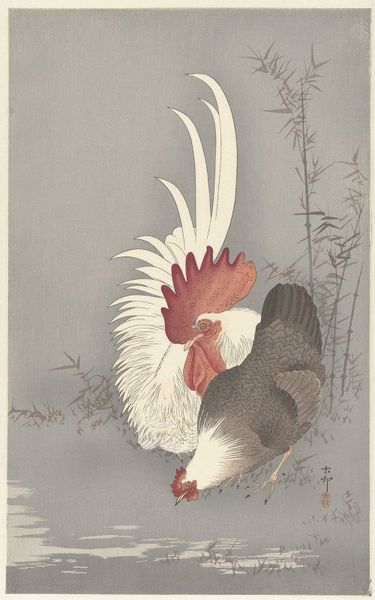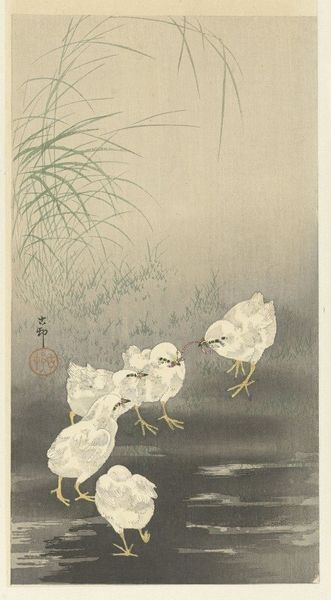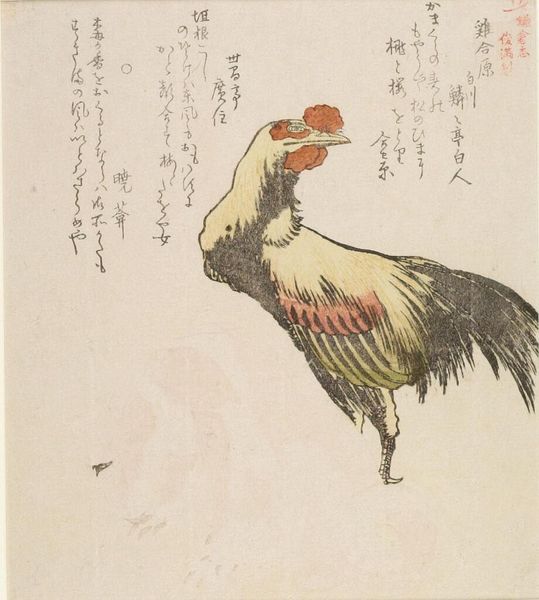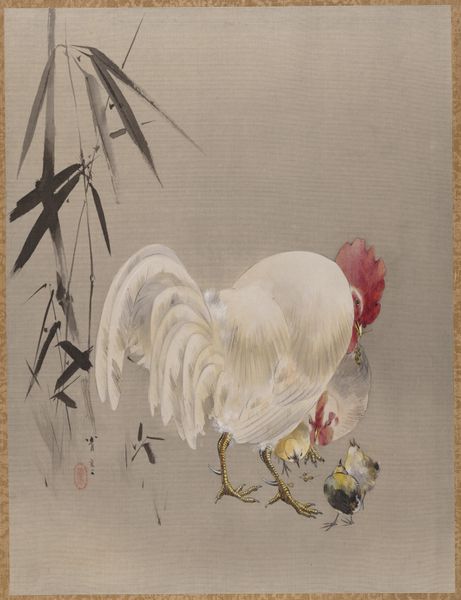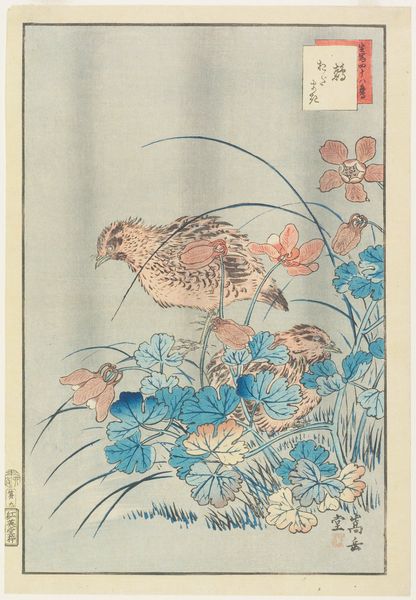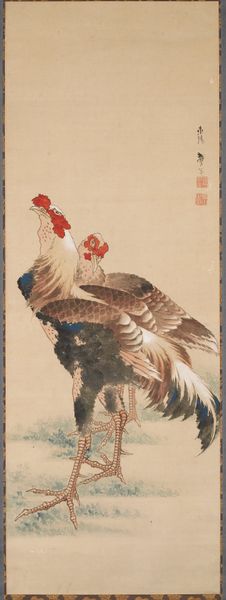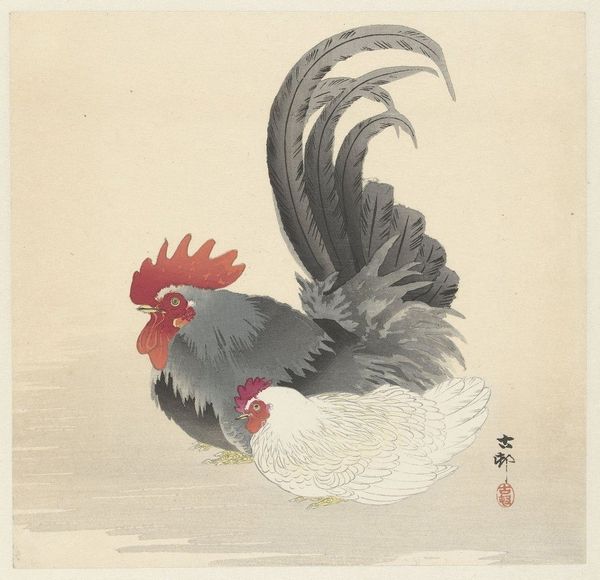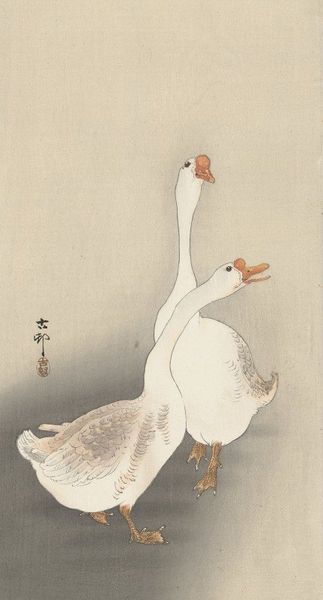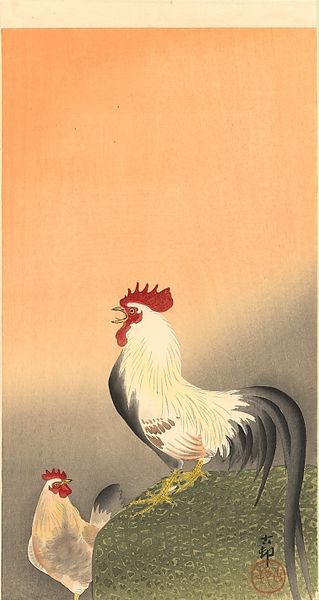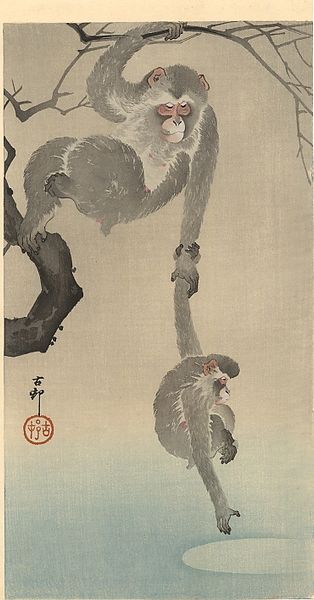
painting, watercolor
#
organic
#
water colours
#
painting
#
asian-art
#
ukiyo-e
#
watercolor
#
line
#
realism
Dimensions: Image: 40 1/8 x 16 1/4 in. (101.9 x 41.3 cm) Overall with mounting: 72 3/4 x 21 3/8 in. (184.8 x 54.3 cm) Overall with knobs: 72 3/4 x 23 3/4 in. (184.8 x 60.3 cm)
Copyright: Public Domain
Curator: Here we have Ito Jakuchu’s “Hen and Rooster with Grapevine,” dating from 1792, currently held at the Metropolitan Museum of Art. Editor: Striking! The textures—the way he’s rendered the plumage, those dark, luscious grapes. There’s something almost tactile about the whole composition. Curator: Indeed. Jakuchu was known for his detailed realism within the Ukiyo-e tradition. Note the careful orchestration of line and wash, particularly the calligraphic brushstrokes. How do you perceive the interaction between representation and form here? Editor: I see a tension. On the one hand, intense naturalism, meticulously capturing the appearance of these creatures. But on the other, there’s the deliberate cultivation of the paper and mineral pigments: Where did he get his materials? I'm wondering how sourcing those pigments from local artisanal craftsmen may have shaped this artwork. Curator: A valid consideration. We can also look at how the vertical scroll format—a traditional form—influences the composition. The rooster perched above, the hen nestled among the grapes below, each precisely placed to create balance and harmony. It invites a certain contemplative gaze. Editor: But within that balance, a hint of disquiet. The rooster’s gaze, somewhat unsettling, perhaps underscores a subtle tension or imbalance between humanity and nature. Considering the social context of late 18th century Japan, I can't help but see that the ruling classes, so to speak, dominate in an artificial order while the worker must contend with limited resources—like the lower hen with just some vines. Curator: Interesting. You highlight a societal element through its materiality. I appreciate your perspective, urging a focus on material origins and social meaning. It invites another lens through which we can look. Editor: And you bring light to an essential balance inherent within. A dance between observation and the materiality of its own creation—a synthesis that enriches the viewing experience. Curator: I couldn't agree more.
Comments
No comments
Be the first to comment and join the conversation on the ultimate creative platform.
